If you grow roses or tomatoes, it’s likely that you’ve heard of people tre... Read More
- Home >
- 15 Different Types of Rakes and Their Uses
15 Different Types of Rakes and Their Uses
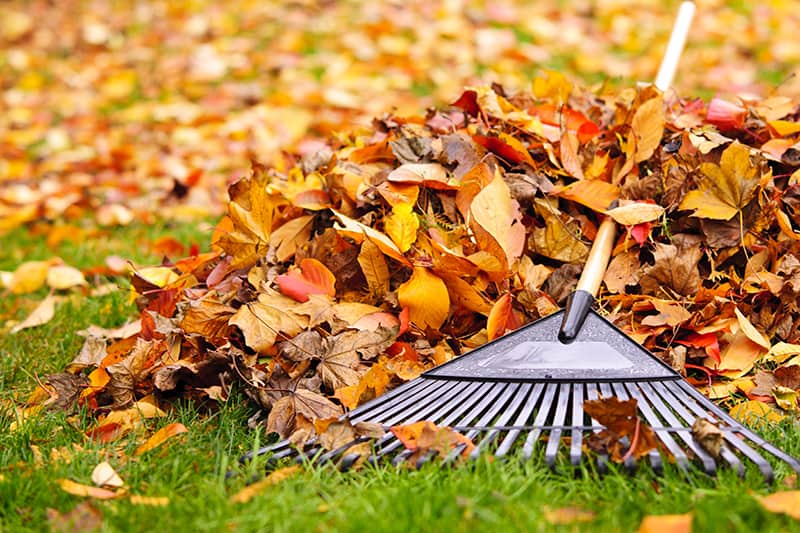
If you want to improve your garden soil quality or your lawn aesthetics, rakes can be your best friend.
But there are many varieties of rakes with different purposes.
If you’ve ever wondered the type of rake you need in your garden tool collection, this list of different types of rakes and their uses is for you.
1. Garden Rake
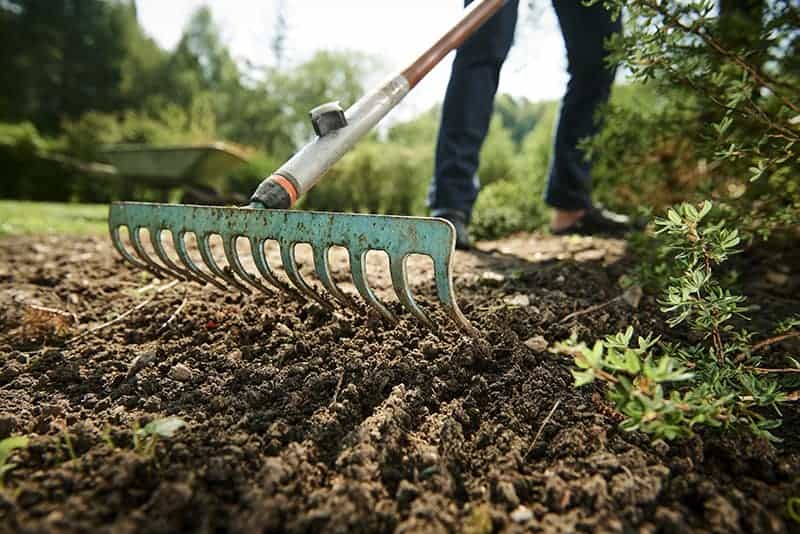
A garden rake is a multi-purpose rake that most homeowners with a backyard will have kicking around somewhere in their garage or garden shed. This type of rake is what most people associate a rake with, and it has a fairly standard design. It can also be known as a bow rake. Typically, a garden rake will have a long and straight handle, with a stiff, wide head at a right angle to the handle. The head will typically be made of sturdy metal, and have many short tines attached to it. The tines will be rigid and unmoveable, making them ideal for tougher jobs such as breaking up compacted soil. These types of garden rakes have many uses, as they are designed to be able to tackle a variety of jobs, rather than having one specific purpose. You could use this sort of rake to level out soil or sand, raking up flower beds, or aerating soil. Its sturdy build allows it to rake up materials heavier than leaves, such as gravel, and mulch.
2. Landscape Rake
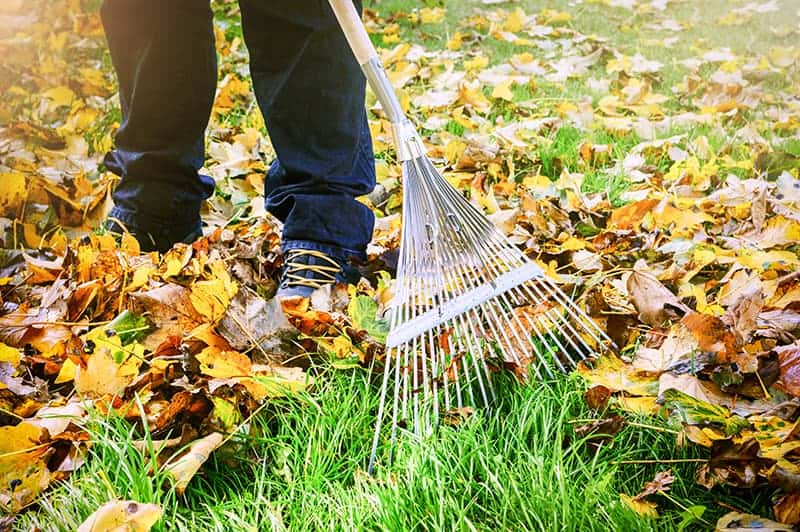
A landscape rake is a specialized garden tool that is more likely to be found in the truck bed of a landscaping company than it is in the garage of a typical homeowner. This type of rake is designed to complete large jobs quickly and is ideal for use in leveling soil or sand over a large area, for example, if a customer is having their entire yard resurfaced. This rake will have a very wide head with lots of very short metal tines fixed to it. This rake is usually made from a strong metal that will not bend and can stand up to many hours of tough use.
3. Thatch Rake
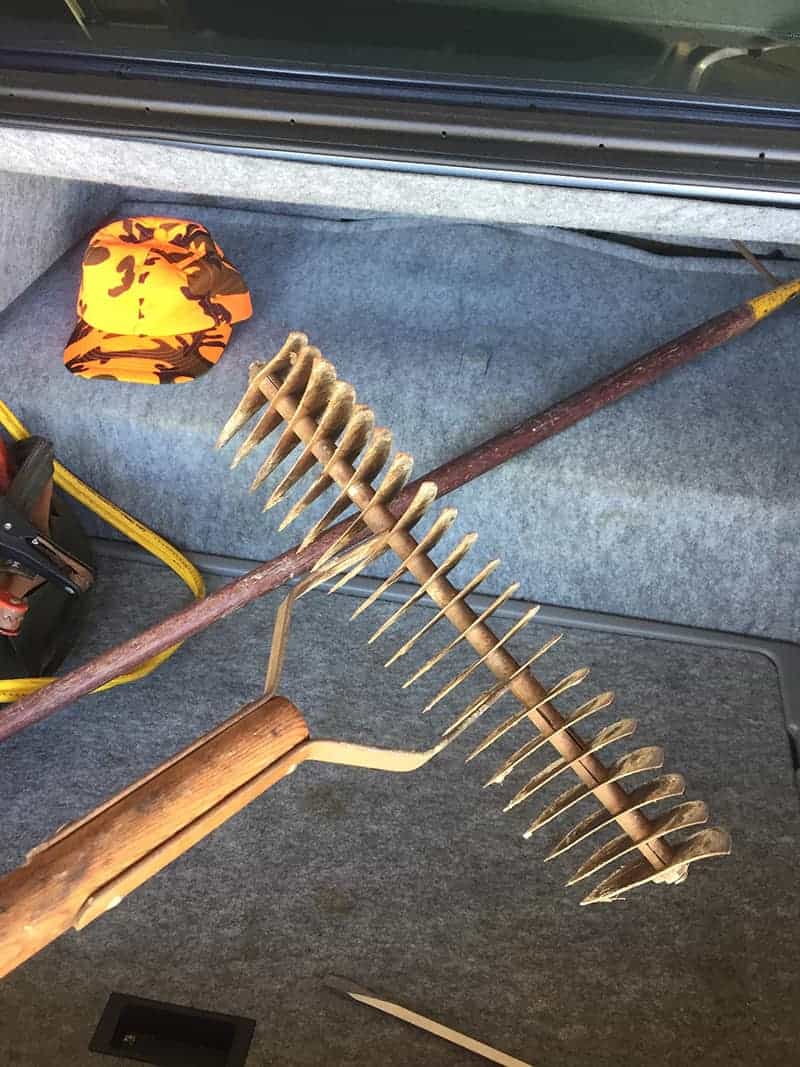
Thatch is a buildup of organic debris on a lawn, which can look unsightly and offers no benefits to your grass. If you have a thatch buildup that is thicker than a half-inch deep, then you’ll need a specifically designed thatch rake to help you remove it. These types of rakes can also be known as scarifying rakes, or dethatching rakes. They are specially designed so that when pulled along a lawn’s surface, they will drag out all of the thatch while leaving the healthy grass intact. A thatch rake may have just one side of tines on its head, but many have two. One side of the rake will be for breaking up the clumps of thatch, and the other side is for removing it from the lawn. The tines on these rakes are so sharp that they operate like blades. They are sharp and strong, being sharp enough to break up the thatch, and strong enough to drag it out. To operate a thatch rake, you need to angle the blades so that they dip just below the lawns surface, and then drag the rake towards you. This simple motion will enable you to rid your lawn of all of the thatch buildup.
4. Lawn Rake
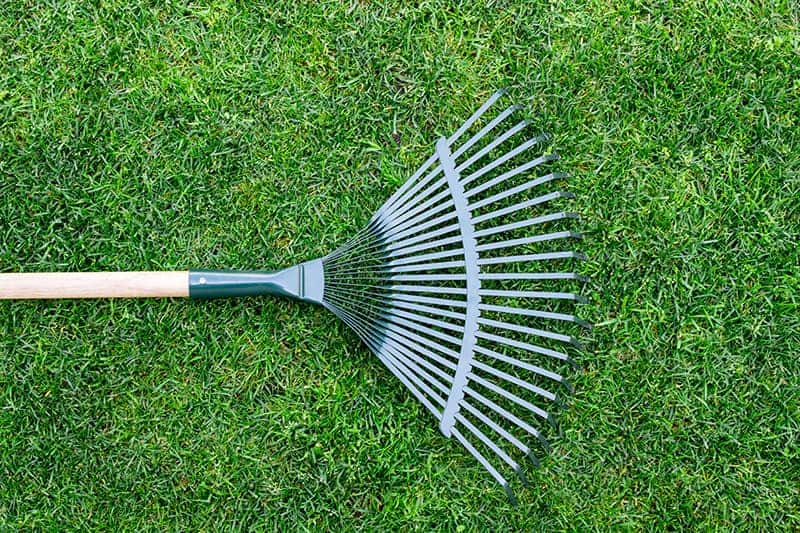
This is a popular type of rake that many gardeners will own for use in their backyard. A lawn rake is often mistaken for a leaf rake because it has a similar design. These rakes have a long, straight handle, with long and slender metal tines at the head that spread out to create a fan shape. Though these rakes are perfectly good at raking up leaves, they also have many other uses. Their strong but flexible tines mean they are well suited for raking up any number of garden debris, such as gravel, sand, and soil. They work well at dragging debris out from beneath shrubs and large plants without damaging the plant itself. They can also be used to break up the soil, and move it around to give it a more fluffed up texture. In the absence of a thatch rake, this rake could also be used to remove thatch build up from a lawn. This is a great multi-purpose type of rake to own, though if you primarily want to rake up leaves, then a plastic leaf rake would be better suited, because leaves can get trapped more easily on the metal tines of this rake, clogging it up and making it more inconvenient to use.
5. Leaf Rake
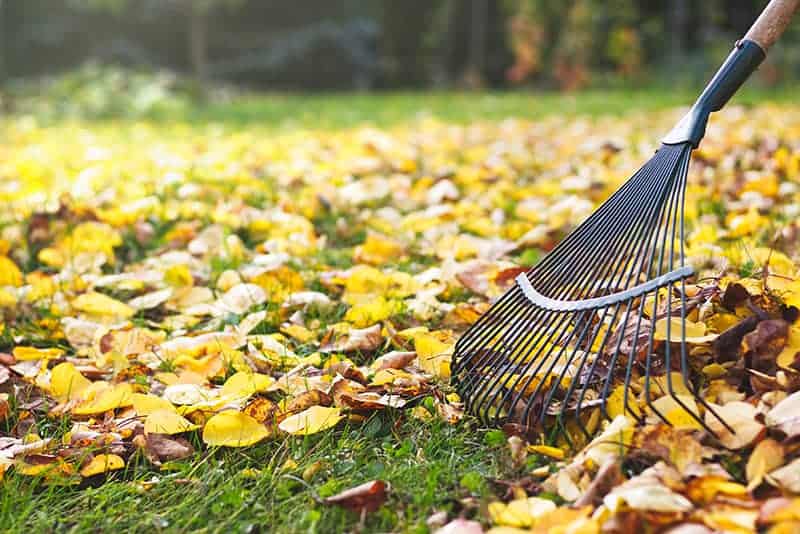
Leaf rakes are shaped the same as lawn rakes, with a long fan-shaped set of tines. The key difference is that rakes designed for raking up fallen leaves will be made from plastic, not metal like lawn rakes. In spite of being plastic, these rakes will be less flexible than lawn rakes, and therefore better suited to transporting light materials. Leaf rakes are essential if you have trees around your yard or close to your property that drops their leaves in fall. Fallen leaves look messy and can also cause problems on the lawn, or become slippery and unsafe to walk on when compacted on sidewalks. A good-sized leaf rake will efficiently clear up leaves into easily manageable piles that can then be bagged up for collection or added to a compost pile. You can buy leaf rakes in various different widths, depending on what sized yard you are working with. A wider rake will enable you to rake up leaves more quickly, though it may cause more strain on your body as it will be dragging along larger and, therefore, heavier piles of leaves.
6. Leaf Scoop Rake
A leaf scoop rake is like a standard leaf rake with a useful twist. When using a standard leaf rake, you will scrape up leaves into a pile, and then have to bend down and manually scoop up the leaves to maneuver them into a different location, such as a compost heap, or a wheelbarrow. A leaf scoop rake, however, has a set of curved edges that open up like jaws to scoop and hold leaves to be easily transported. This makes raking up leaves an easier and less messy operation. It will also be especially useful for anyone prone to back injuries who might suffer when having to repeatedly bend over to collect piles of leaves. A leaf scoop rake will have a plastic construction, and is not particularly strong and should therefore only be used to move piles of leaves around. It would not withstand trying to transport heavier garden materials, such as gravel or compacted soil.
7. Shrub Rake
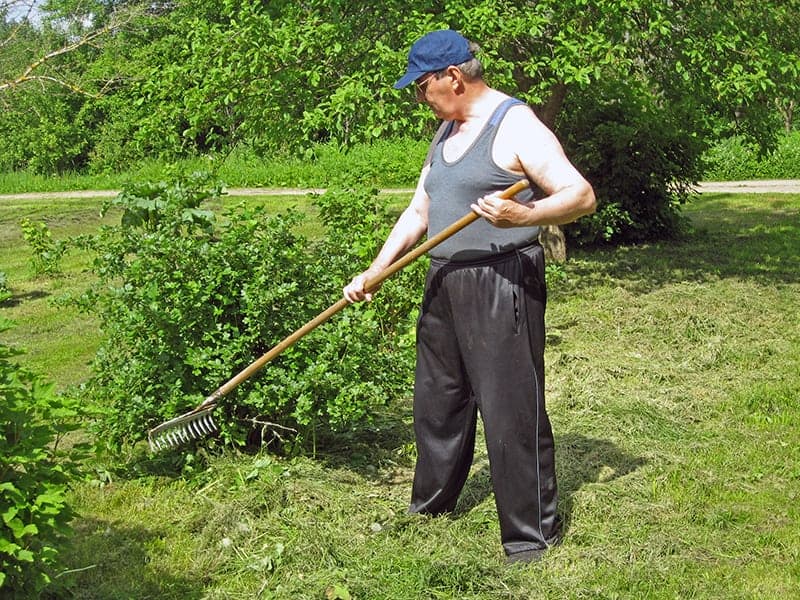
A shrub rake is of a similar design to a leaf rake, but the tines are shorter and there are fewer of them. The fact that there are fewer tines means that the fan shape that is created at the head is much narrower. This means that this kind of rake can get into smaller spaces where a leaf rake or garden rake is too wide to reach. It is ideal for raking out debris from alongside fences or between and underneath shrubs, hence the name of ‘shrub rake.’ A shrub rake can be made from metal or plastic and is great for tidying up tight areas in a short space of time.
8. Stone Rake
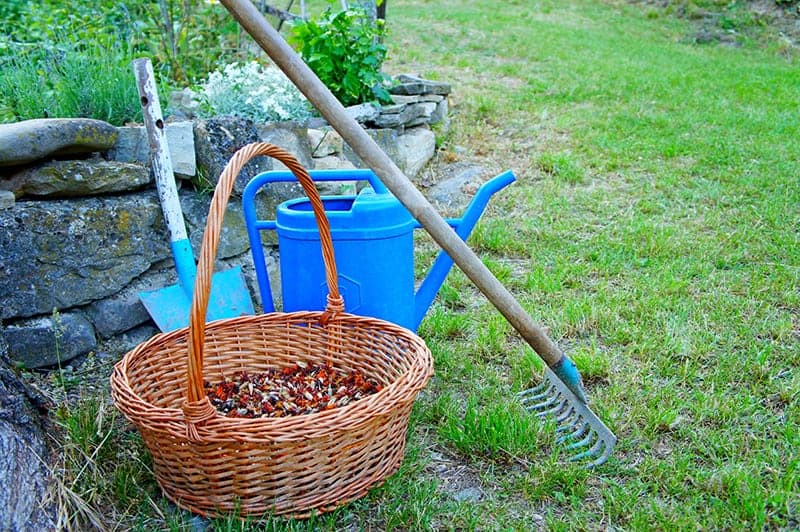
A stone rake can also be called a gravel rake or tarmac rake. It looks similar to a multi-purpose garden rake, but it is designed for more heavy-duty jobs and is therefore made from more durable materials. This type of rake will typically have a wider head than a garden rake, with widely spaced, chunky tines, made from strong metal. These rakes will usually cost more to buy than standard garden rakes because they require a superior construction in order to fulfill the heavy-duty tasks they are designed for. They are great for spreading material over the ground, including gravel, stones, or mulch. The tines of these rakes are not flexible and can handle tougher materials without being damaged or losing strength.
9. Concrete Rake
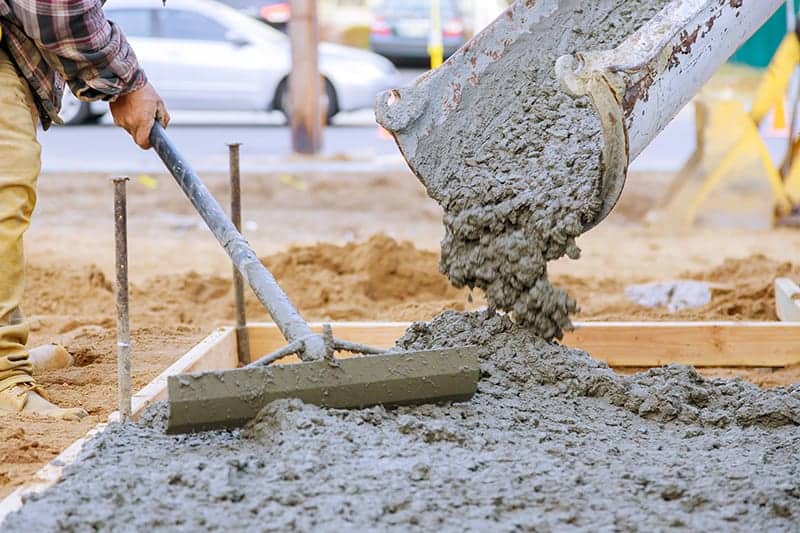
This type of rake is used when building concrete paths, patios, or walkways. It will have a metal head that is textured on one side and flat on the other side and slightly curved so that it can be used in a scooping action. These rakes are specifically designed to deal with concrete, being able to scoop up wet concrete and move it to another area before it has dried. The flat edge of the tool is for leveling out the concrete and getting a smooth finish.
10. Hay Rake
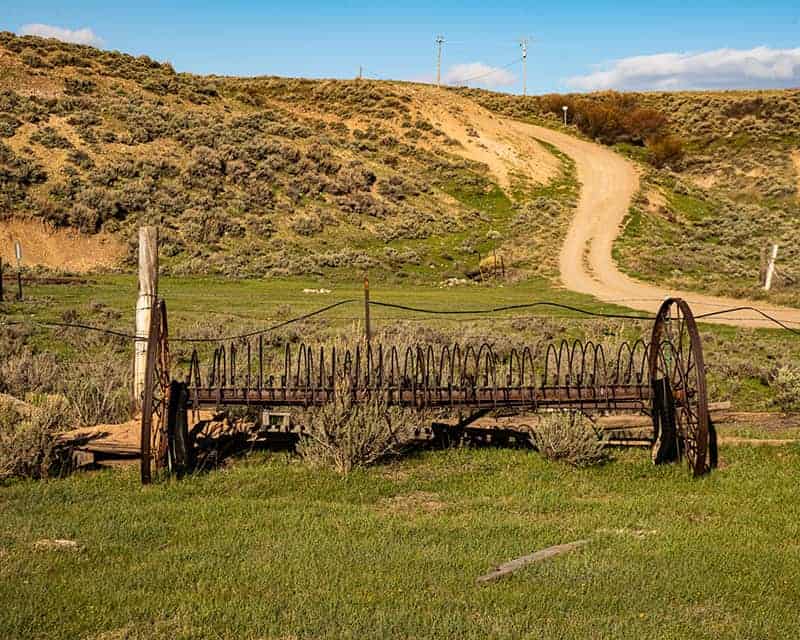
A hay rake is perfect for use on a small farm, where it will be best utilized to scrape up hay from the ground to be put into bales, or for turning the hay over and spreading it around so that it can dry out more efficiently. It has a similar design to a landscape rake, with its wide head and stiff tines, which enable it to cover a large area of ground fairly quickly. Some hay rakes also have attachments so that they can be fixed to the back of a tractor and dragged along mechanically rather than physically.
11. Hand Rake
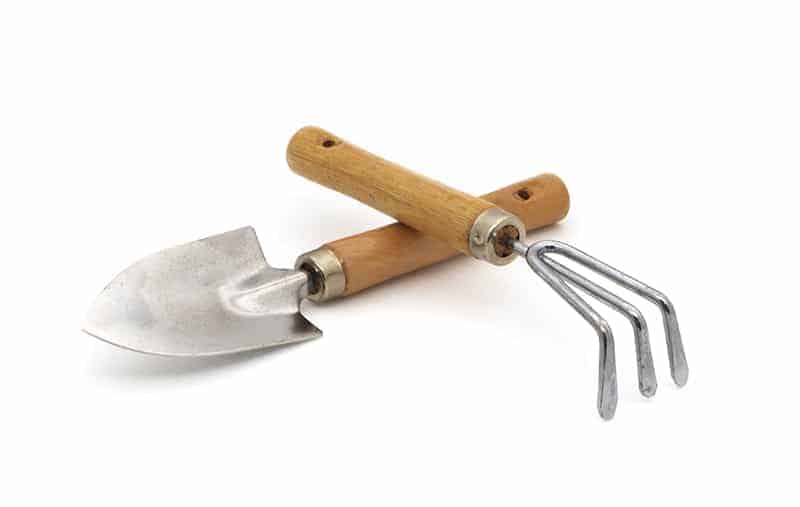
A hand rake is essentially a miniature version of a full-sized rake. They will have the same type of design as a full-sized rake, but with a much smaller handle. Although the head will be the same style, this will also be a scaled-down version on a hand rake, enabling much more precise work. These rakes are good for gardening at close quarters, and allow you to have much greater precision over the rake and its movements. A hand rake is perfect for use on flowerbeds, or when working in garden pots and containers. This tool will be helpful for pulling out weeds or scraping away old roots or other debris that has accumulated in the top layers of soil. You can also use a hand rake for tilling soil, turning beds, and removing loose stones from the soil’s surface. A good quality hand rake will have a sturdy metal head with strong tines that are not flexible. The handle can be either wooden or made from metal, though wooden handles are more ergonomic and will give the user a more comfortable experience.
12. Lake Rake
These rakes are also known as pond rakes or algae rakes. They are a special type of rake that is intended to be used on a body of water, such as a lake or a pond. To use one of these lakes, you would stand by the edge of your pond and drag the head of the rake over the surface of the water, and the rake will collect aquatic weeds or algae so that you can easily remove it from your water. These rakes are a key part of maintenance to keep your water healthy and clean if you have a pond in your yard or a cottage on a lake. You can also get versions of lake rakes that have extra long handles for fixing to the back of a boat, or so that the user can hold the rake down from the boat.
13. Roof Rake
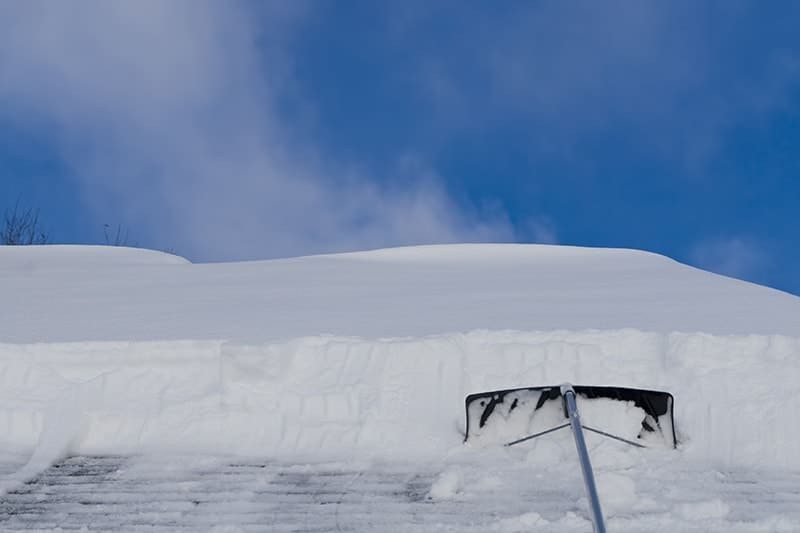
Roof rakes are some of the most lightweight rakes around because they are intended for use on roofs and therefore need to be easy to hold over head or while standing up high on a ladder. They will have plastic heads that are angled so that they can scoop snow or other debris from off the roof. They also have extra long or extendable handles, so that the user can hold the rake at a good distance, allowing anything pulled down from the roof to fall far away from the user. If you live in an area that experiences several feet of snowfall at a time, then a roof rake is a sensible tool to own to eliminate hazards that can cause structural problems to your home. Accumulated snow can be very heavy and put a strain on a roof; in some cases, this can cause the snow to collapse, so raking the roof periodically during snowy weather is a sensible idea. Roof rakes are also good for removing a buildup of fallen leaves, and other debris that can mount up over time.
14. Fire Rake
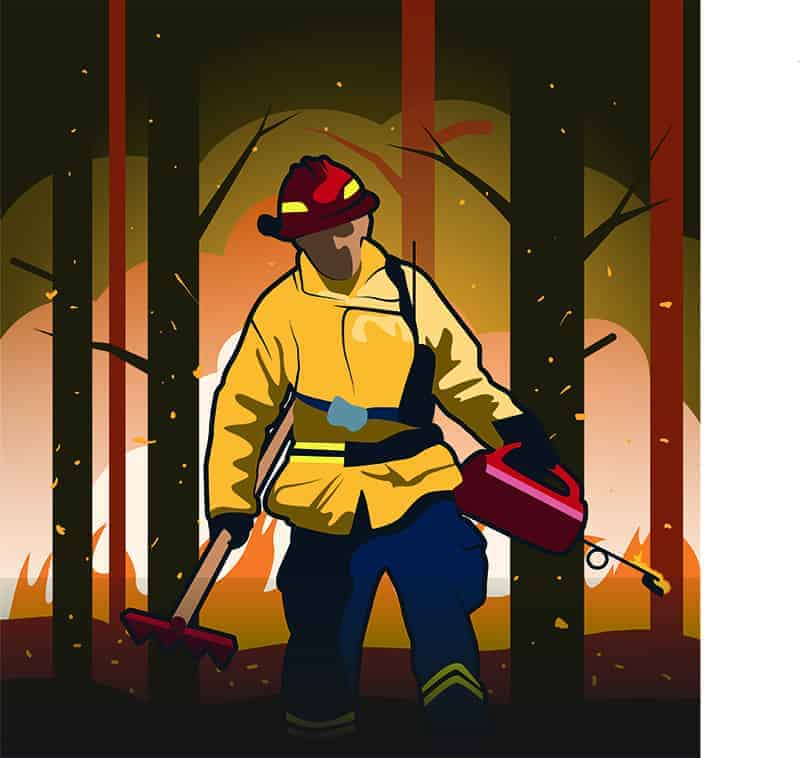
A fire rake is a tool predominantly used by firefighters, but if you live in an area that is prone to wildfires, then you may feel more comfortable to own one yourself and keep in the garage for emergency situations. These rakes have strong metal tines in wide triangular shapes, and they are used in a pushing motion to push soil and earth onto the flames to keep them from progressing forwards. The rakes are used to control a fire and stop it from spreading outside of the area it has already burnt. These rakes can have long or extendable handles so that the user can operate them from a safe distance without risk of getting too close to the fire.
15. Berry Rake
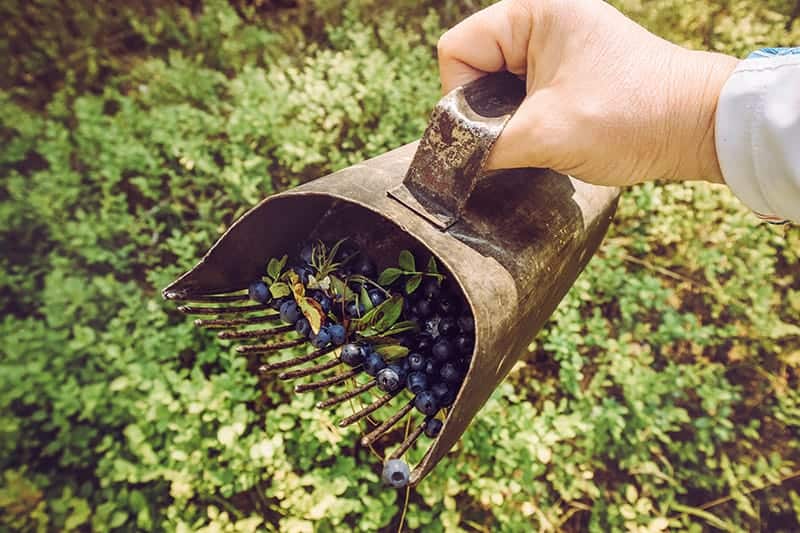
Berry rakes are long hand-held tools with a small rake at the end, and a bucket-like container attached. The purpose of these rakes is to gently pull berries from tall trees, and the aim is that the fallen berries are caught by the rakes bucket. If you have fruiting berry trees that you like to harvest each year, then a berry rake is a good time-saving tool that will help you to get the most out of your trees. It is much more convenient and efficient than standing on a ladder and collecting the fruits by hand, and it will also enable you to reach berries that you may not ordinarily have been able to reach. It also helps to prevent mess on the ground by collecting the berries in the bucket. These are specially designed rakes that only work for the purpose of harvesting berry trees.
Rake Construction
A. Plastic

Plastic heads on rakes can have advantages and disadvantages, depending on what you want to use them for. Some types of rakes will only be available with plastic heads, such as roof rakes, as these need to be lightweight so that they can safely be used overhead, making plastic an ideal material to use. For roof rakes, a head made from plastic also makes sense because it is a non-invasive material that can scrape a roof without the danger that it could cause damage to the roof.
Leaf rakes are one of the common types of rake that you might find with either a plastic or metal head. If you plan to only use your rake for gathering leaves, then one with a plastic head will be most appropriate. These have limited flexibility that makes them good for scraping up lightweight materials such as leaves, and they don’t get jammed up with leaves as easily as rakes with metal tines. The other advantage of plastic heads on rakes is that it helps to keep the rake lightweight, which makes it less strenuous for the user to operate. A lightweight rake will also be especially beneficial for children or elderly people. Plastic rakes also tend to be the most inexpensive to buy, as they are cheap to manufacture.
B. Wood

Some rakes have wooden tines, usually made from bamboo. These tend not to be as durable or long-lasting as plastic rakes, but they are kinder to the environment. They are made from natural products, and once the rake has become so worn down that it is no longer suitable for use, it can be added to the compost heap rather than clogging up landfill like plastic. If you are looking for an eco-friendly rake, or enjoy using more traditional materials, then a wooden rake with a bamboo head could be right for you. Wooden handles are also common amongst various different types of rakes. These offer good grip and are gentler on the skin, being less likely to cause blisters than metal handles. They are prone to rot if left outdoors, so they will need to be taken care of.
C. Metal

Rakes with long and narrow metal tines are slightly more expensive to buy than their plastic counterparts, but they do tend to be more long-lasting and so might work out to be more cost-effective over time. Metal heads on rakes will not snap or crack like plastic can, and they have more flexibility, being able to rake large or heavier items and easily bouncing back into shape. A metal head on a rake will also be able to tackle a wider range of materials than a plastic headed rake, as plastic tines are really only suitable for use with leaves. Metal tines can handle a greater variety of material, such as mulch, gravel, sand, and soil. The main drawback of metal tines when it comes to leaf raking, the tines can impale the leaves and cause big obstructions on the rake head, which can be time-consuming and messy to sort out, making your raking job less efficient. For handles, the most common type of metal used is aluminum. These will be fairly lightweight but can dent or bend when thrown around.
D. Steel

Steel will be used on the head of a rake that is intended to be rigid and sturdy, such as a thatch rake. These types of rakes, as well as those that are best for moving hard materials like stones, benefit from steel heads as they won’t bend under pressure or weight. You can also find rakes with steel handles, which are the heaviest handle type, but also the most durable. They won’t rust, bend, or break, and have excellent longevity. A rake made from steel is likely to be more expensive than rakes made of other materials, but it is also an investment because steel is likely to outlive other types of rakes.
E. Fiberglass
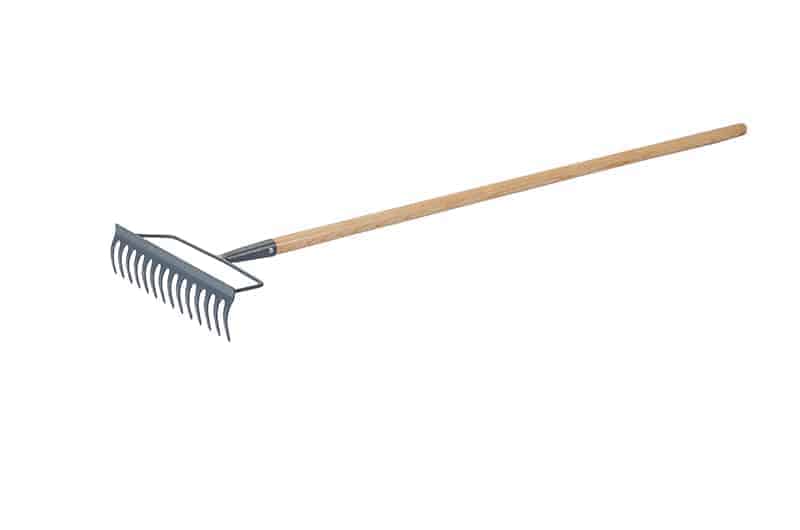
Fiberglass handles are both lightweight and strong, offering a good compromise between steel and aluminum rakes. They offer longevity and ease of use, though it will typically cost more to buy than an aluminum alternative.
Related Content
-
Epsom Salt for Plants – Tips For Using Epsom Salt In The Garden
-
How Light Affects Plant Growth – What You Need to Know
Light is something we all take for granted unless you live in the arctic c... Read More
-
23 Cheap & Amazing Garden Edging Ideas You Can Try
Stuck for inspiration on ways to tidy up the perimeter of your garden? A n... Read More
-
All about Spider Mites and How to Get Rid of Them
Home growers and gardeners tend to be quick to learn one of the most uncom... Read More
